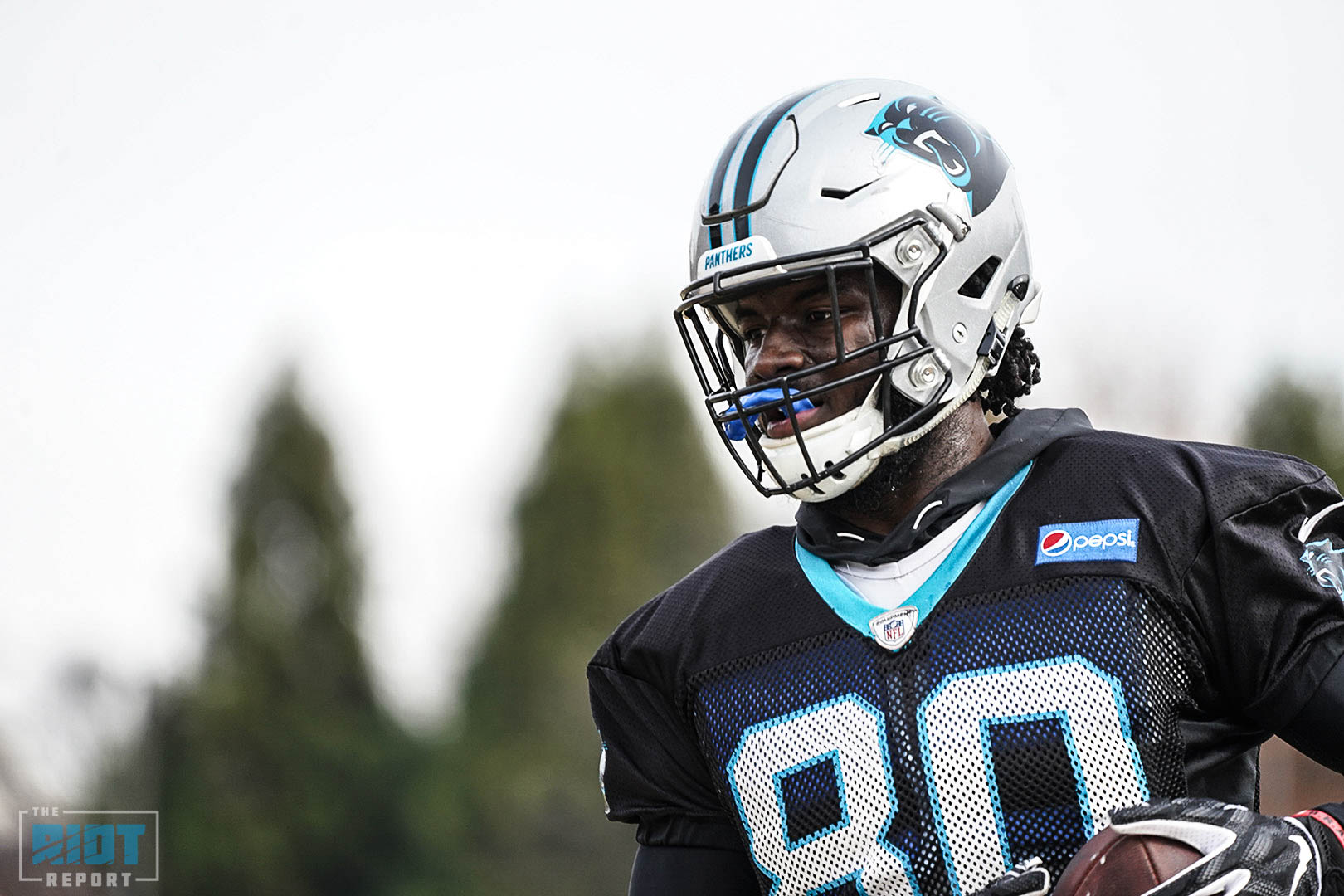Run Blocking
On paper, the 4.7 yards per carry against the Giants with Thomas as the lone tight end looks very good, but given that this drops down to 1.4 yards per carry when you take out the two jet plays where Thomas was used as a decoy, it suddenly becomes far less impressive – this is something that is borne out on tape. He looked to struggle for assignments at times, and even when he did get his block lined up, he tended to just dive towards the defender looking to knock them out of the way:
This led to multiple whiffs, and with his weight often well away from his feet and limited hand engagement in his blocks, it was hard to put this down to anything other than a lack of technique. In fact, the only run block from the Giants game where he did a decent job from a technical point of view was the following play, where he is able to get his arm underneath that of the defender and so is able to push him up and direct him across the field:
On the whole, though, if you watched the Giants game in isolation, it would be hard to come to any other conclusion than that Ian Thomas was an objectively poor run blocker. However, when you then watch his play from the Browns game, it’s hard not to be somewhat taken aback by how much progress he made from a technique point of view.
Suddenly, he is playing with a wider base with his weight staying over his feet and looking to use his hands to engage the frame of the defender:
Yes, he could do with keeping his arms a bit straighter to make it easier to sustain the block even longer, but this is a world apart from where he was just a couple of months earlier. This made it easier for him to not just hold blocks, but to actually turn his natural power into effective, controlled push:
Yes, there is still room to grow, and keeping his elbows in more to make it easier for him to get inside placement on the defender is probably the biggest step he has yet to take, but over the course of half a season, he was able to go from somebody who could barely block to a legitimate plus run blocker:
This was somewhat borne out by the numbers as well, as the Panthers were consistently able to keep pace with the chains with Thomas as a solo run blocker, with less than 20% of run plays with him on the field as the solo TE not gaining positive yardage – this figure was over 40% for the Giants game. There is still room for him to grow in this regard from a technique point of view, with more consistent inside hand placement being the biggest thing he needs to work on, but given how much he was able to grow as a rookie, it’s hard not to be enthusiastic about what he can become as a run blocker, even if he is sometimes guilty of a missed assignment:
Pass Blocking
Thomas really wasn’t used much as a blocker in the passing game, and even when he was asked to block on passing plays, it was often on RPOs where he was essentially just run blocking. In fact, against the Giants, the only play where he was actually asked to stay in to protect on was the following, and even that was a PA screen:
The reason for this is hard to tie down with confidence, but given that keeping tight ends in to pass protect is generally more of a situational decision, the fact that they tended not to use Thomas in these situations against the Giants suggests that they didn’t really trust him to perform in this way. It is, however, hard to say that he was an actively bad pass protector early in the season – more that the Panthers just didn’t ask him to do it.
While they certainly didn’t use him a huge amount as a pass protector against the Browns, he did at least see a couple of snaps as a legitimate pass protector in this game, and while he’s not the second coming of Joe Thomas, he showed a good technical ground, staying patient and forcing the defender to try and beat him outside, all while keeping his weight over his feet and using his hands well to get inside position on the defender:
As a rule, I’m not a huge fan of using tight ends to pass protect on straight dropbacks outside of the red zone and long third downs, but these situations do arise, and as with the play above, if Thomas can be relied on to do his job in situations such as this, that does add to his value. Crucially for the Panthers, if Thomas is able to fill this role, their third tight end doesn’t have to be somebody to take on these snaps, and creates more options out of the passing game than what they currently have in Manhertz, whose contribution at the moment is limited to being able to block in this way.
In short, Thomas wasn’t really asked to pass protect last season, especially early on, but when he was asked to, he generally looked….fine. However, there is a reason why he spent over 60% of his snaps during these two games running routes – so what is it that Thomas offers as a receiver that is so valuable?
Up Next: The True Value of Ian Thomas



